How To Recognize Naturally COLORed DIAMONDS
COLORed DIAMONDS are visibly different from any colored gemstones such as rubies or sapphires. Their diamond brilliance easily sets them apart. On the other hand is there any way of telling natural fancy color diamonds apart from their color enhanced counterparts? Well, the answer is that there really is no way of telling them apart by sight alone. Only a trained professional can tell the difference and by using special implements.
The two main methods of identifying color-enhanced diamonds are color zoning and spectroscopy. Color zoning can provide an indication of probable color enhancement, but only spectroscopy, a procedure done in a trade lab by a trained gemologist, will give a conclusive answer on the origin of a diamond’s color.
It is worth mentioning that, although it is very difficult to tell naturally colored diamonds and enhanced diamonds apart, we do not encourage the unethical representation of color enhanced diamonds as natural. We always provide a written statement to prove that our diamonds are color enhanced on all communications and recommend our customers to do the same.
-
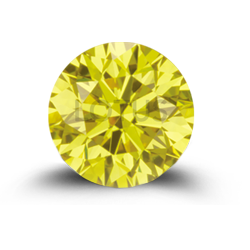 Color Zoning – The color in an enhanced diamond is usually evenly distributed throughout the diamond. In some instances, there is an uneven coloration that can be seen using a microscope or a loupe to be directly related to the faceted shape of the diamond. In certain stones the overall color seen through the pavilion is much lighter than the face-up color of the stone with color occurring in a narrow area near the culet or keel-line with no other strong color zoning seen through the rest of the stone. Such uneven or zoned coloration is caused by the irradiation process and is most often seen as a band of dark blue, green or yellow color that parallels the outer faceted shape of a diamond or a band of color that forms a star-shaped pattern around the pointed culet of a diamond. This is a strong indication of enhancement.
Color Zoning – The color in an enhanced diamond is usually evenly distributed throughout the diamond. In some instances, there is an uneven coloration that can be seen using a microscope or a loupe to be directly related to the faceted shape of the diamond. In certain stones the overall color seen through the pavilion is much lighter than the face-up color of the stone with color occurring in a narrow area near the culet or keel-line with no other strong color zoning seen through the rest of the stone. Such uneven or zoned coloration is caused by the irradiation process and is most often seen as a band of dark blue, green or yellow color that parallels the outer faceted shape of a diamond or a band of color that forms a star-shaped pattern around the pointed culet of a diamond. This is a strong indication of enhancement.
-
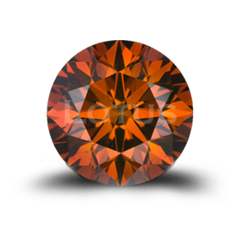 Spectroscopy – An infrared spectrophotometer, or spectroscope, is the instrument used to record the diamond’s absorption spectrum. The recorded spectrum is then studied for absorption lines – features that show whether a diamond has been enhanced or not. The presence of the H1b (1,936 nm) and H1c (2,026 nm) absorption lines is a tell-tale sign that the diamond was color enhanced.
Spectroscopy – An infrared spectrophotometer, or spectroscope, is the instrument used to record the diamond’s absorption spectrum. The recorded spectrum is then studied for absorption lines – features that show whether a diamond has been enhanced or not. The presence of the H1b (1,936 nm) and H1c (2,026 nm) absorption lines is a tell-tale sign that the diamond was color enhanced.
-
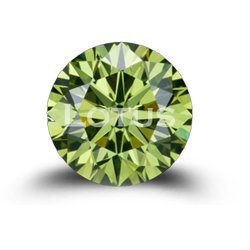 Green Diamonds – The origin of color in some green diamonds cannot be determined as being natural or enhanced because both are made using the same process – irradiation – one occurring naturally under the ground, the other, in a lab. A trained gemologist has to look for brown or green irradiation stains on the surface to determine if it is a natural body color. But sometimes these stains can be removed during the cutting process thereby putting even a certain natural stone’s origin of color in doubt.
Green Diamonds – The origin of color in some green diamonds cannot be determined as being natural or enhanced because both are made using the same process – irradiation – one occurring naturally under the ground, the other, in a lab. A trained gemologist has to look for brown or green irradiation stains on the surface to determine if it is a natural body color. But sometimes these stains can be removed during the cutting process thereby putting even a certain natural stone’s origin of color in doubt.
-
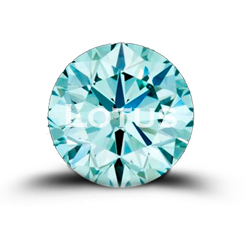
Geiger Counter Testing
All enhanced diamonds should be tested using a Geiger counter. None will contain radioactivity if they’ve been legitimately produced and properly irradiated. However, the presence of radiation detected by a Geiger Counter is itself proof of enhancement – albeit an illegal and improper form of enhancement (the one exception are green diamonds that may’ve been naturally irradiated).IMPORTANT: Radioactive stones should be considered ‘rogue’ – their sources should be brought to the attention of authorities, and the stones should not be sold to the public under any circumstances.
-
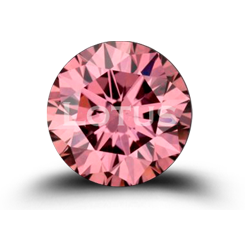
Identifying Coated Diamonds
Although common sense would suggest it should be easier, identifying coated diamonds can be just as difficult as identifying irradiated diamonds. When viewed face up their coloration will be evenly distributed, as the color is placed only on the pavilion side.
Reflected diffused light shone onto the pavilion side will reveal an iridescent, film-like coating. Color zoning is the easiest way to trace any form of coating, however. In high magnification pavilion facet junctions may show some damaged film or random colorless spots, which would again reveal the origin of their color.
Another simple, if destructive, way to test for coating is by immersing the diamond in concentrated acid. So far none of the coatings on the market are resistant to acid, so this will result in corrosion of the coating.

